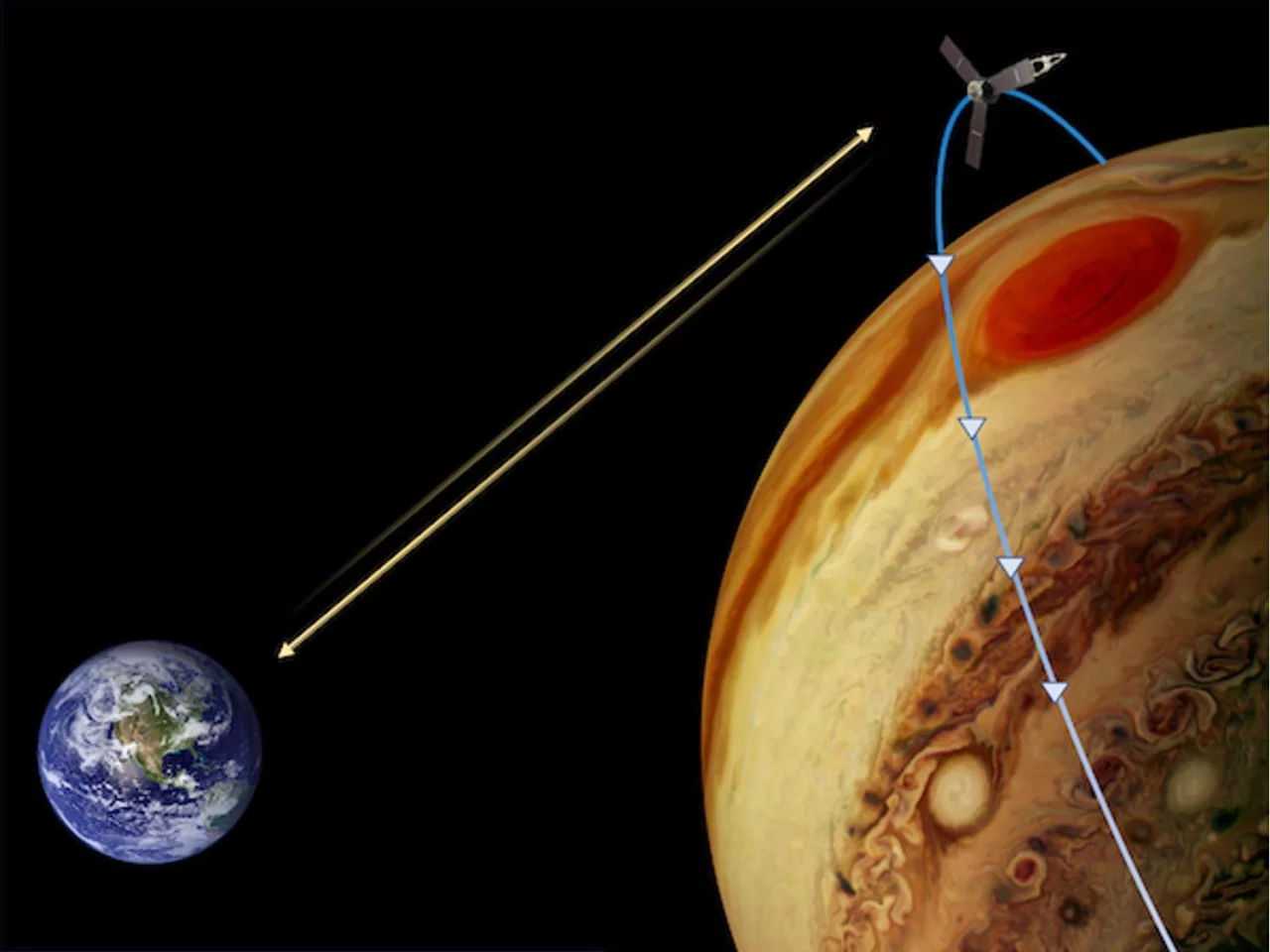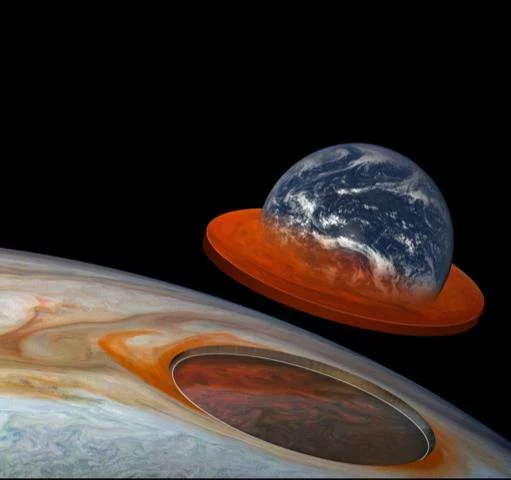For centuries, the famously colorful and chaotic atmosphere of Jupiter has intrigued astronomers seeking to understand the secrets behind its swirling, stunning sheath of cloud cover. NASA's pioneering Juno probe has continued to peel back this curtain since entering orbit around the gas giant five years ago, and the latest data from the spacecraft has offered the most complete picture yet, culminating in what scientists call the first 3D picture of the Jovian atmosphere.
Juno has completed 37 passes of Jupiter since arriving on the scene in 2016, and these flybys have already revealed a suite of fascinating insights about the gas giant. These include that the planet's famous colorful bands extend thousands of kilometers below the surface and clash with a complex magnetic field, and that its iconic Great Red Spot, a ferocious storm that has been brewing for centuries, penetrates around 320 km (200 miles) below the surface.
Juno has also taught us that Jupiter's magnetic field is around 10 times stronger than any found on Earth, showed its atmosphere to be asymmetrical, and captured stunning imagery of the planet and its cloudy exterior. The latest data returned by the probe has enabled scientists to delve even further into the complex atmosphere.

“These new observations from Juno open up a treasure chest of new information about Jupiter’s enigmatic observable features,” says Lori Glaze, director of NASA’s planetary science division at the agency’s headquarters in Washington. “Each paper sheds light on different aspects of the planet’s atmospheric processes – a wonderful example of how our internationally diverse science teams strengthen understanding of our solar system.”
Among the revelations are that some of the vortex storms swirling around Jupiter are far taller than expected, extending as far as 100 km (62 miles) below the clouds. These cyclones were also found to be warmer at the top and colder at the bottom owing to different atmospheric densities, while the opposite is true of its anticyclones that spin in the opposite direction, of which the iconic Great Red Spot is the most prominent example. A key finding concerns the true depth of the Great Red Spot, which Juno's microwave radiometer (MWR) revealed to actually extend as far as 500 km (310 miles) beneath the cloud tops.

“The precision required to get the Great Red Spot’s gravity during the July 2019 flyby is staggering,” says Marzia Parisi, a Juno scientist from NASA’s Jet Propulsion Laboratory in Southern California and lead author of a paper in the journal Science on gravity overflights of the Great Red Spot. “Being able to complement MWR’s finding on the depth gives us great confidence that future gravity experiments at Jupiter will yield equally intriguing results.”
The data also showed that the circling jet streams that give Jupiter its colorful belts and zones undergo a change at around 65 km (40 miles) deep, where they appear darker in microwave light. The many cyclones at the planet's poles, meanwhile, were found to affect each other's motion and hold each other largely in the same place, rather than wander poleward like such storms on Earth.
“Jupiter’s cyclones affect each other’s motion, causing them to oscillate about an equilibrium position,” says Alessandro Mura, a Juno co-investigator at the National Institute for Astrophysics in Rome. “The behavior of these slow oscillations suggests that they have deep roots.”
Papers detailing the discovery were published in the journals Science and Journal of Geophysical Research: Planets.
Source: NASA





